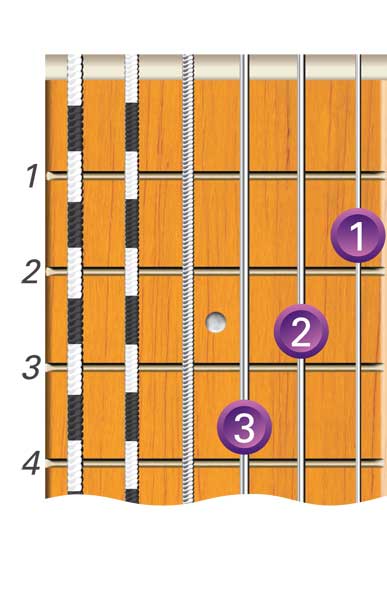
Open Chords
Where there is more than one option for a particular chord, the easiest version is boxed.
Am

Bbm

Bm

Bm

Cm

C#m

C#m

Dm

Dm

Ebm

Em

Fm

F#m

Gm

Gm

Abm

Progressions Using Open Minor Chords
Here are some progressions which use minor chords and major chords based on the five fundamental forms (C A G E and D forms). The first one contains both an A major and an A minor chord. Notice that the root note (A) is in the same position for both chords.

Ties
A tie is a curved line that connects two notes with the same position on the staff. A tie indicates that you play the first note only, and hold it for the length of both notes. For a more in-depth study of ties, see Progressive Complete Learn to Play Rhythm Guitar Manual.

Minor Arpeggios
For every type of chord there is a corresponding arpeggio. Shown in the following example is a C minor arpeggio which consists of the notes C, Eb and G which are the root, flattened third and fifth of a C minor chord.

This is a G minor arpeggio which consists of the notes G, Bb and D. These are the root, third and fifth of a G minor chord.

Here is an example which makes use of both major and minor arpeggios. Remember to hold the whole chord shape down as you play each bar. Listen carefully and make sure all the notes sound clearly and evenly.

